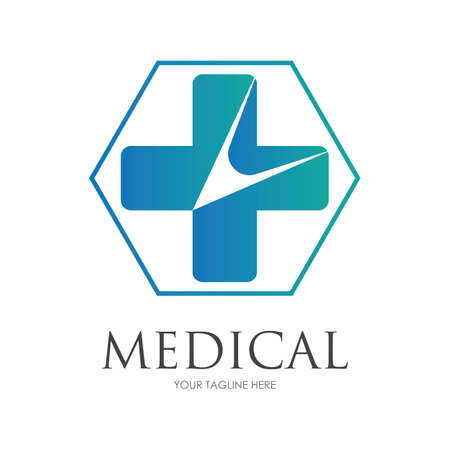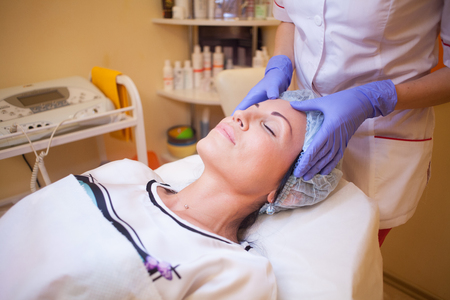Introduction: Understanding the Cultural and Clinical Context
Within the United Kingdom’s healthcare landscape, the growing diversity of patient populations presents both an opportunity and a challenge for practitioners. As communities become more ethnically varied, clinicians are increasingly required to develop not only technical expertise but also cultural competence to effectively treat patients with ethnic skin. This is particularly pertinent in dermatology and related specialisms, where differences in skin tone, structure, and response to treatment demand nuanced understanding. The ability to recognise and respect cultural backgrounds, beliefs, and expectations is no longer just a desirable quality—it is an essential skill for delivering equitable care. By bridging the gap between clinical knowledge and cultural awareness, UK practitioners can ensure that every patient receives appropriate, sensitive, and effective treatment, irrespective of their ethnic background.
2. Current Challenges Faced by Practitioners
When it comes to treating ethnic skin in the UK, practitioners are confronted with a series of unique challenges that extend far beyond routine clinical practice. These challenges often stem from a lack of comprehensive training resources, insufficient clinical exposure, and widespread misconceptions about ethnic skin types. Each of these factors contributes to a knowledge gap that can directly impact patient care and outcomes.
Lack of Training Resources
One significant barrier is the scarcity of accessible, evidence-based training materials specifically tailored to the characteristics and needs of ethnic skin. Most medical curricula in the UK still focus predominantly on lighter phototypes, leaving practitioners with limited formal instruction on diagnosing and managing conditions common among patients with darker skin tones.
Limited Clinical Exposure
Another concern is the limited opportunity for hands-on experience with diverse patient populations during medical training. In many NHS trusts and GP practices, the local demographic may not reflect the full spectrum of skin types seen across the country. This results in reduced confidence and competence when practitioners encounter conditions presenting differently in ethnic skin. The table below outlines common gaps in clinical exposure:
| Training Area | Common Limitation |
|---|---|
| Dermatological Conditions | Lack of case studies featuring ethnic skin presentations |
| Diagnosis Skills | Minimal supervised practice with diverse patient groups |
| Treatment Planning | Insufficient guidance on culturally sensitive management approaches |
Prevalent Misconceptions
Misconceptions about ethnic skin remain pervasive within both clinical and educational settings. Some practitioners may assume, for example, that individuals with darker skin are less susceptible to certain conditions such as melanoma or acne scarring, which can delay diagnosis and treatment. These outdated beliefs highlight an urgent need for up-to-date education rooted in current research and best practice guidelines.
The Impact on Patient Care
The cumulative effect of these barriers is evident in disparities in health outcomes among patients from ethnic minority backgrounds. Without adequate training and exposure, practitioners may inadvertently overlook symptoms or misinterpret signs specific to ethnic skin, leading to suboptimal care.
Conclusion of Challenges
Addressing these core challenges—limited resources, inadequate clinical exposure, and persistent misconceptions—is fundamental to bridging the educational gap and fostering equitable care for all patients regardless of skin type.

3. Gaps in Medical Education and Training
Despite the increasing diversity of the UK population, there remain notable shortcomings within medical education and ongoing professional development when it comes to equipping practitioners to effectively treat ethnic skin. Most undergraduate medical curricula in the UK still place a heavy emphasis on dermatological conditions as they appear on lighter skin tones, often using teaching materials, textbooks, and clinical images that do not reflect the spectrum of presentations found in patients with darker skin. This lack of representation can lead to missed or delayed diagnoses and inappropriate management, ultimately contributing to health inequalities.
Furthermore, while postgraduate training programmes such as GP and dermatology specialisms have begun to recognise these gaps, their efforts remain piecemeal and inconsistently implemented across regions and institutions. Mandatory continuing professional development (CPD) activities often do not specifically address the nuances of diagnosing and managing skin conditions in ethnically diverse populations. For example, clinical signs such as erythema or pallor may present differently on darker skin, and certain conditions—like keloids or pigmentary disorders—are more prevalent in some ethnic groups but receive little attention during training.
The absence of standardised guidance and assessment criteria further exacerbates this issue. Practitioners may complete their training without ever being exposed to real-life cases involving patients from Black, Asian, or other minority ethnic backgrounds. This lack of exposure not only affects confidence but also competence, making it challenging for clinicians to provide equitable care once they enter practice.
Overall, these educational deficiencies highlight an urgent need for systematic reform at every stage—from undergraduate syllabi through to postgraduate training and CPD. Addressing these gaps is essential if the NHS is to deliver high-quality, culturally competent care for all patients, regardless of their background.
4. Perspectives From Ethnic Minority Communities
To truly bridge the gap in training and education for practitioners treating ethnic skin, it is essential to centre the voices of those with lived experience. The insights and perspectives from ethnic minority communities across the UK offer invaluable guidance for shaping best practice. This approach requires not just listening, but proactively incorporating patient experiences, addressing trust issues, and engaging with both individuals and community leaders.
Incorporating Lived Experiences
People from ethnic minority backgrounds often report feeling overlooked or misunderstood when seeking dermatological care. Common concerns include inaccurate diagnosis, lack of awareness around specific conditions affecting pigmented skin, and limited culturally sensitive communication. By directly involving patients in curriculum design, service delivery, and feedback loops, practitioners can better appreciate nuanced needs and expectations.
Trust Issues in Healthcare Settings
Historical and ongoing disparities in healthcare have contributed to a degree of mistrust towards medical institutions among some ethnic minority communities. These trust issues may stem from perceived or actual instances of bias, lack of representation among healthcare professionals, or previous negative experiences. Addressing these concerns means more than increasing knowledge; it requires building sustained relationships founded on respect and transparency.
Key Areas Impacting Trust
| Area of Concern | Description | Potential Solution |
|---|---|---|
| Representation | Lack of practitioners reflecting the diversity of patient populations | Diversifying recruitment & supporting career progression for ethnic minorities |
| Cultural Competency | Insufficient understanding of cultural practices impacting skin health | Embedding cultural competence training in practitioner education |
| Communication Barriers | Poor dialogue leading to misdiagnosis or misunderstanding patient needs | Implementing tailored communication strategies & interpreter services |
| Feedback Mechanisms | Lack of clear pathways for patients to provide constructive input | Establishing regular forums & anonymous reporting options |
The Role of Community Leaders and Patient Feedback
Community leaders, including faith leaders, local advocates, and cultural organisations, act as trusted bridges between healthcare providers and patients. Engaging with these figures helps practitioners gain deeper contextual understanding and encourages uptake of services among hesitant groups. Structured feedback—through surveys, focus groups or advisory panels—ensures that services remain responsive and evolve with changing community needs.
Towards Best Practice: A Collaborative Model
A collaborative model that incorporates lived experiences, addresses trust barriers, and values ongoing feedback is vital for effective care delivery. Not only does this enhance educational content for trainees and practising clinicians, but it also drives tangible improvements in patient outcomes and satisfaction within the UKs diverse society.
5. Strategies for Enhancing Education and Training
Addressing the knowledge gap among UK practitioners treating ethnic skin requires a concerted, evidence-based approach. The importance of embedding robust, relevant training in medical education cannot be overstated. Below, I outline key strategies that can help bridge this divide and equip clinicians with the skills and confidence to offer high-quality care for patients of all backgrounds.
Evidence-Based Curriculum Development
First and foremost, there is a pressing need to revise existing curricula across medical schools and postgraduate training programmes. Incorporating case studies, clinical images, and research specifically relating to ethnic skin conditions will provide future practitioners with practical insight. This approach should be underpinned by up-to-date evidence reflecting the prevalence, presentation, and management nuances seen in diverse populations.
Collaborative Initiatives and Partnerships
No single institution can tackle this issue alone. Collaborative initiatives involving universities, NHS Trusts, professional bodies such as the British Association of Dermatologists (BAD), and patient advocacy groups are essential. Joint workshops, seminars led by experts from ethnic minority backgrounds, and cross-institutional mentorship schemes create opportunities for shared learning and foster an inclusive environment where best practices are disseminated widely.
Ongoing Professional Development
The landscape of healthcare is ever-changing; as such, ongoing professional development is crucial. Regular CPD (Continuing Professional Development) sessions focusing on ethnic skin should be made readily available to all healthcare professionals. These could take the form of online modules, in-person training days, or interactive webinars—ensuring accessibility regardless of location or seniority.
Peer Learning and Community Engagement
Peer-to-peer learning groups can also play a pivotal role. By encouraging open discussion of challenging cases and inviting feedback from colleagues with experience in ethnic skin care, practitioners can continually refine their approach. Furthermore, engaging directly with local communities through outreach programmes helps build trust and ensures training remains relevant to patient needs.
A Practical Path Forward
In summary, closing the training gap demands evidence-based curriculum reform, proactive collaboration across the sector, and commitment to lifelong learning. By investing in these strategies, the UK healthcare system can better serve its increasingly diverse population—ensuring that every practitioner is prepared to deliver equitable, culturally competent care.
6. Towards a More Inclusive Future
In summarising the key recommendations for bridging the gap in training and education for practitioners treating ethnic skin, it becomes clear that a more inclusive and equitable approach is essential. First and foremost, medical curricula must be revised to reflect the diverse presentations of skin conditions across different ethnicities. This requires both undergraduate and postgraduate training to include comprehensive modules on diagnosing and managing skin concerns in patients with darker skin tones. Additionally, continuing professional development (CPD) opportunities should be made widely available, ensuring that current practitioners remain up-to-date with best practices and emerging research. Collaboration between universities, NHS Trusts, professional bodies, and community organisations will be crucial to embed these changes sustainably. Regular feedback from practitioners and patients alike can inform ongoing adjustments to educational resources and clinical guidelines. By prioritising cultural competence, encouraging open dialogue about health inequalities, and supporting practitioners through evidence-based resources, the UK healthcare sector can move towards genuinely improved patient outcomes for all skin types. Ultimately, sustainable progress will depend on commitment at every level—from policy makers to frontline clinicians—to make inclusion a permanent fixture in dermatology education and practice.


